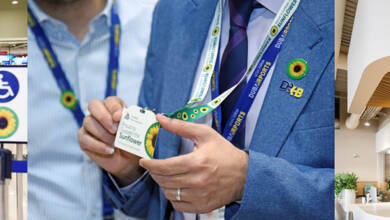Skeletons give a glimpse into UAE life 7,500 years ago
The mass grave, discovered at Al Shabika in 1992 by Carl Philips, offers a window into the rich history of the UAE
More than quarter of a century after the discovery of a Neolithic cemetery in the UAE, archaeologists and historians continue to study the life and times of the people who were perhaps the first inhabitants of this land.
The mass grave, discovered at Al Shabika in 1992 by Carl Philips and his team, offers a window on the rich history of the UAE, where pearl fishing and tribal life was the norm.
Mr Philips led the British mission which unearthed 42 skeletons in shallow graves.
Analysis of the remains suggested the people could have lived around the Umm Al Quwain Lake about 7,500 years ago.
Archaeologists call this the Neolithic period, or the final division of the Stone Age.
“The ancient cemetery dates back to the middle of the sixth millennium BC and belongs to the Neolithic period, which showed the development of fishing, pearling and the reliance on marine resources during that time,” said Rania Kannouma, head of the archaeology department at UAQ Department of Tourism and Archaeology.
Further discoveries in the same area pointed to the conclusion that the land was inhabited by humans during that time.
In 2013, five skeletons were unearthed from beneath the dig site worked by Mr Philips and his team.
The ancient cemetery dates back to the middle of the sixth millennium BC, which showed the development of fishing, pearling and the reliance on marine resources during that time
Rania Kannouma
“Pearls were found next to some of the skeletons which provide evidence of pearling in that period and shows the symbolic value of pearls in the burial ritual.”
Archaeologists also found burnt animal bones in the settlement, aiding the hypothesis that the tribes gathered during burials and funeral meals.
The site was covered with seashells which, according to Ms Kannouma, helped keep the skeletons in good condition.
“The existence of shells increased the level of salinity in the soil which helped preserving the skeletons until they were discovered,” she said.
“Some of the bones were kept for further studies while the rest have been reburied in the same area they were found in.”
Antique pottery, psoriatic beads, weighted fishing nets and grinding stones were also found in the settlement
“We also found one of the oldest natural pearls in the world dating back to 7,500 years in the site,” she said.
“Some of the findings are on display at Falaj Mualla Museum.”




